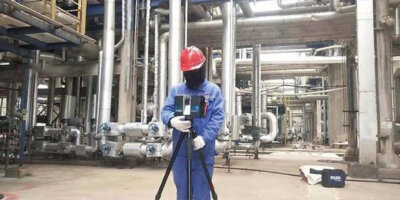In an era of increasing environmental challenges, Effluent Decontamination Systems (EDS) have emerged as a crucial line of defense in protecting public health and the environment. These sophisticated systems play a vital role in managing and treating hazardous liquid waste, particularly from biological research facilities and healthcare institutions. By effectively neutralizing potentially harmful pathogens and contaminants, EDS ensures that effluents released into the environment pose minimal risk to human health and ecosystems.
The importance of EDS in safeguarding public health cannot be overstated. These systems are designed to handle a wide range of biological and chemical contaminants, from common laboratory waste to highly infectious agents. By employing advanced treatment technologies, EDS significantly reduces the potential for environmental contamination and the spread of diseases. This article will explore the various aspects of how EDS protects public health and the environment, examining its mechanisms, applications, and the broader impact on environmental safety.
As we delve into the world of effluent decontamination, we'll uncover the intricate processes that make these systems so effective. From thermal treatment to chemical disinfection, EDS employs a multi-faceted approach to ensure thorough decontamination. We'll also examine the regulatory framework that governs the use of these systems and the ongoing research that continues to enhance their capabilities.
EDS is a critical component in the global effort to maintain environmental integrity and protect human health from the potential hazards of biological and chemical waste.
To provide a comprehensive understanding of EDS and its role in environmental protection, we'll explore several key aspects of these systems. Let's begin by examining the core components and functionalities of EDS:
| Component | Function | Environmental Benefit |
|---|---|---|
| Thermal Treatment | Destroys pathogens through high heat | Prevents release of viable microorganisms |
| Chemical Disinfection | Neutralizes contaminants | Reduces chemical pollutants in effluent |
| Filtration Systems | Removes solid particles | Improves water quality |
| Monitoring Equipment | Ensures treatment efficacy | Maintains consistent environmental protection |
| Containment Units | Prevents leaks and spills | Protects soil and groundwater |
How does EDS neutralize biological hazards?
The primary function of an Effluent Decontamination System is to render biological hazards harmless before they enter the environment. This process is crucial for facilities handling potentially infectious materials, such as research laboratories and hospitals.
EDS employs a combination of physical and chemical methods to neutralize biological hazards. The most common approach is thermal treatment, where effluents are subjected to high temperatures for a specified period. This process effectively destroys most pathogens, including bacteria, viruses, and other microorganisms.
Deeper analysis reveals that the efficacy of thermal treatment depends on factors such as temperature, exposure time, and the specific characteristics of the pathogens present. Advanced EDS systems, like those offered by 'QUALIA', are designed to meet the stringent requirements for treating effluents from high-containment facilities, ensuring complete inactivation of even the most resilient pathogens.
EDS thermal treatment processes can achieve sterilization levels equivalent to autoclaving, effectively eliminating the risk of viable pathogens in treated effluents.
| Pathogen Type | Required Temperature (°C) | Exposure Time (minutes) |
|---|---|---|
| Bacteria | 121 | 15-30 |
| Viruses | 134 | 18-20 |
| Spores | 134 | 30-60 |
What role does EDS play in chemical decontamination?
While biological hazards are a primary concern, EDS also plays a crucial role in managing chemical contaminants. Many research and healthcare facilities generate effluents containing potentially harmful chemicals that must be neutralized before disposal.
EDS addresses chemical decontamination through various methods, including chemical neutralization, adsorption, and advanced oxidation processes. These techniques are tailored to the specific chemical properties of the contaminants, ensuring effective treatment across a wide spectrum of compounds.
The importance of chemical decontamination extends beyond immediate health concerns. Many chemicals can have long-lasting effects on ecosystems if released untreated. EDS helps prevent these long-term environmental impacts by breaking down complex molecules into less harmful components or completely neutralizing them.
Advanced EDS can reduce chemical contaminant concentrations to levels below regulatory limits, often achieving near-complete removal of hazardous substances.
| Chemical Class | Treatment Method | Removal Efficiency (%) |
|---|---|---|
| Heavy Metals | Ion Exchange | 95-99 |
| Organic Solvents | Activated Carbon | 90-98 |
| Acids/Bases | Neutralization | 99-100 |
How does EDS contribute to water conservation efforts?
In addition to its primary role in decontamination, EDS contributes significantly to water conservation efforts. By treating and purifying effluents, these systems enable the safe reuse of water in various applications, reducing the overall demand for fresh water resources.
Many EDS incorporate advanced filtration and purification technologies that can produce water of sufficient quality for non-potable reuse. This treated water can be utilized for purposes such as irrigation, cooling systems, or process water in industrial settings.
The water conservation aspect of EDS becomes increasingly important in regions facing water scarcity. By enabling the safe recycling of water that would otherwise be discarded, EDS helps conserve precious water resources and reduces the environmental impact of wastewater discharge.
Some advanced EDS can recycle up to 80% of treated effluent for non-potable reuse, significantly reducing fresh water consumption in facilities where implemented.
| Water Quality Parameter | Before Treatment | After Treatment | Reuse Standard |
|---|---|---|---|
| Total Suspended Solids (mg/L) | 500-2000 | < 10 | < 30 |
| Chemical Oxygen Demand (mg/L) | 1000-5000 | < 50 | < 100 |
| Total Coliforms (CFU/100mL) | >10^6 | < 1 | < 200 |
What impact does EDS have on reducing environmental pollution?
The implementation of EDS has a profound impact on reducing environmental pollution. By treating effluents at the source, these systems prevent the release of contaminants into natural water bodies, soil, and the atmosphere.
One of the most significant benefits of EDS is the reduction of water pollution. Untreated effluents can introduce a range of pollutants into aquatic ecosystems, including pathogens, chemicals, and excess nutrients. EDS effectively removes or neutralizes these contaminants, helping to maintain the ecological balance of rivers, lakes, and coastal waters.
Furthermore, EDS plays a role in reducing air pollution. Some treatment processes, particularly those dealing with volatile organic compounds, prevent the release of harmful gases into the atmosphere. This not only protects air quality but also contributes to the overall reduction of greenhouse gas emissions.
Studies have shown that facilities implementing advanced EDS can reduce their environmental pollutant discharge by up to 99%, significantly minimizing their ecological footprint.
| Pollutant Type | Reduction in Discharge (%) | Environmental Impact |
|---|---|---|
| Pathogens | 99.99 | Improved water safety |
| Organic Matter | 95-98 | Reduced eutrophication |
| Heavy Metals | 90-95 | Decreased soil contamination |
How does EDS ensure compliance with environmental regulations?
Compliance with environmental regulations is a critical aspect of operating research, healthcare, and industrial facilities. EDS plays a pivotal role in ensuring that these facilities meet or exceed regulatory requirements for effluent discharge.
Modern EDS are designed with regulatory compliance in mind. They incorporate monitoring and control systems that continuously track treatment efficacy and effluent quality. This real-time data allows facilities to demonstrate compliance with regulatory standards and quickly address any deviations.
Moreover, the implementation of EDS often goes beyond mere compliance. Many facilities use these systems to achieve higher standards of environmental protection, positioning themselves as leaders in sustainable practices and corporate responsibility.
Advanced EDS can provide automated compliance reporting, reducing the administrative burden on facilities while ensuring consistent adherence to environmental regulations.
| Regulatory Parameter | Typical Limit | EDS Performance | Compliance Margin |
|---|---|---|---|
| BOD5 (mg/L) | < 30 | < 10 | 66% below limit |
| pH | 6.0 – 9.0 | 7.0 – 8.0 | Well within range |
| Fecal Coliforms (CFU/100mL) | < 200 | < 1 | 99.5% below limit |
What are the future developments in EDS technology?
The field of effluent decontamination is constantly evolving, with ongoing research and development aimed at improving system efficacy, efficiency, and sustainability. Future developments in EDS technology promise even greater protection for public health and the environment.
One area of focus is the integration of advanced sensors and artificial intelligence to optimize treatment processes in real-time. These smart systems can adjust treatment parameters based on the specific characteristics of incoming effluents, ensuring optimal decontamination while minimizing energy and resource consumption.
Another promising development is the use of novel materials and treatment methods. For example, researchers are exploring the potential of nanomaterials for enhanced filtration and catalytic processes that could revolutionize effluent treatment.
Emerging EDS technologies aim to achieve complete contaminant removal while reducing energy consumption by up to 50% compared to current systems.
| Technology | Current Efficiency | Projected Efficiency | Improvement |
|---|---|---|---|
| Smart Sensors | 85-90% | 95-98% | 10-15% |
| Nanofiltration | 90-95% | 98-99% | 5-10% |
| AI-driven Optimization | N/A | 20-30% energy reduction | Significant |
How does public awareness influence the adoption of EDS?
Public awareness plays a crucial role in the adoption and implementation of advanced effluent decontamination systems. As communities become more informed about environmental issues and the potential risks associated with untreated effluents, there is increased pressure on facilities to adopt robust EDS solutions.
Education and outreach programs have been instrumental in raising awareness about the importance of proper effluent treatment. Many organizations and government agencies have launched initiatives to inform the public about the role of EDS in protecting public health and the environment.
This increased awareness has led to greater public support for investments in EDS technology. Communities are more likely to back initiatives and regulations that require facilities to implement state-of-the-art effluent treatment systems, recognizing the long-term benefits to public health and environmental quality.
Public education campaigns have been shown to increase community support for EDS implementation by up to 70%, demonstrating the power of awareness in driving environmental protection efforts.
| Awareness Factor | Impact on EDS Adoption | Public Support (%) |
|---|---|---|
| Environmental Education | High | 75-85 |
| Health Risk Information | Very High | 80-90 |
| Community Engagement | Moderate | 60-70 |
In conclusion, Effluent Decontamination Systems play a vital role in protecting public health and the environment. By effectively neutralizing biological and chemical hazards, conserving water resources, and reducing environmental pollution, EDS contributes significantly to sustainable development and environmental stewardship.
The impact of EDS extends far beyond the facilities where they are implemented. By preventing the release of contaminants into the environment, these systems help maintain the integrity of ecosystems, protect biodiversity, and safeguard human health on a broader scale.
As technology continues to advance and public awareness grows, the importance of EDS in environmental protection is likely to increase. Future developments promise even more efficient and effective systems, further enhancing our ability to manage and mitigate environmental risks.
Ultimately, the widespread adoption and continued improvement of EDS represent a commitment to responsible resource management and environmental protection. As we face growing environmental challenges, these systems will remain a crucial tool in our efforts to create a healthier, more sustainable world for current and future generations.
External Resources
Endocrine Disruptors: from Scientific Evidence to Human Health Protection – This study presents scientific knowledge on the health effects of endocrine disruptors, their presence in the environment and humans, and recommendations for better protection of human health and the environment.
Health Protection – This page outlines the public health functions related to health protection, including risk assessment, enforcement, and control of activities to minimize exposure to health hazards.
CDC Data Modernization Efforts Accelerate Nation's Ability to Detect and Respond to Health Threats – This article discusses the CDC's efforts in modernizing public health data infrastructure, which is crucial for detecting and responding to various health threats, including environmental hazards.
A History of the Public Health System – This resource provides historical context on how public health systems have evolved to protect citizens from health threats, including environmental and chemical hazards.
Core Principles of Public Health in Health Protection Practices – This chapter overview covers key public health concepts, principles, and approaches, including health protection activities that aim to minimize health risks and protect the public from avoidable health threats.
European Commission – Endocrine Disruptors – This section discusses the management of endocrine disruptors across various sectors to protect health and the environment.
Related Contents:
- Effluent Decontamination Systems: Safeguarding Malaysia’s Environment
- Effluent Decontamination: Essential for High-Risk Labs
- Decontamination Systems: Safeguarding Health and Environment
- Effluent Decontamination Systems for Biosafety Laboratories
- Water Decontamination: Essential Methods for Clean, Safe Water
- Thermal Effluent Decontamination: Protecting Our Environment
- Effluent Decontamination: Safeguarding Our Environment
- Effluent Decontamination: Ensuring Pharmaceutical Safety
- Continuous Effluent Decontamination: Protecting Our Environment






























